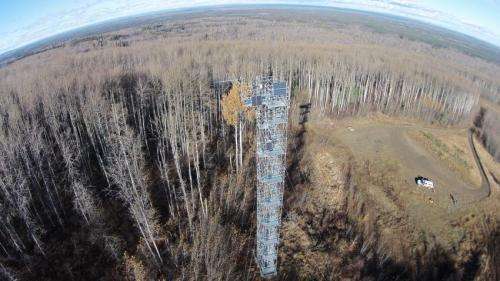Data analytics give researchers a real-time view of carbon's impact on the environment

A group of Canadian and international researchers and graduate students supporting the University's Enviro-Net project to monitor climate change are now using IBM's InfoSphere Streams software to quickly ingest, correlate and analyze data as it arrives from more than 500 sensors implanted in some of the world's most remote – and vulnerable – ecosystems.
The University of Alberta collaborated with researchers from IBM's T.J. Watson Laboratory to integrate the software into their research to reduce from months to minutes the time required to analyze data. The technology provides researchers—and eventually policy makers – with an unprecedented ability to predict environmental events, such as forest fires and drought, and to apply insights to more accurately forecast how boreal and tropical forests are returning after deforestation and disturbances.
The software provides real-time analysis for more than 10,000 data points per second from sensors measuring carbon levels and other environmental indicators such as relative humidity, temperature, soil moisture, atmospheric pressure and ambient noise from forests in Canada, Australia, Brazil, Costa Rica and Mexico.
Dr. Arturo Sanchez-Azofeifa, from the University's Department of Earth and Atmospheric Sciences, is the project leader. He will be demonstrating the speed of the analytics platform at the United Nations Framework Convention for Climate Change Conference of the Parties in Lima, Peru in late November, 2014.
The depth of insights now being produced has not previously been available in real time. "When I started this project four years ago I had no idea how much data I would be generating, and we could not look at our data in a reasonable amount of time. It was taking something like six months to two years before we had usable insights," says Dr Sanchez-Azofeifa. "Now, we can basically 'see' the forests breathing in real time."
Dr. Sanchez-Azofeifa, along with students at the University of Alberta, will work with IBM to develop a simplified 'dashboard' view of the data to make it easier to share and convey insights to decision-makers.
"Right now, there is an enormous amount of critical data produced by environmental monitors," said Bernie Kollman, IBM's vice-president, Public Sector Alberta. "The ability to quickly analyze that data and make informed decisions will have implications for us here in Alberta as researchers study the impact of oil sands extraction efforts. It will also help other policy makers around the world support environmental stewardship."
Provided by IBM




















